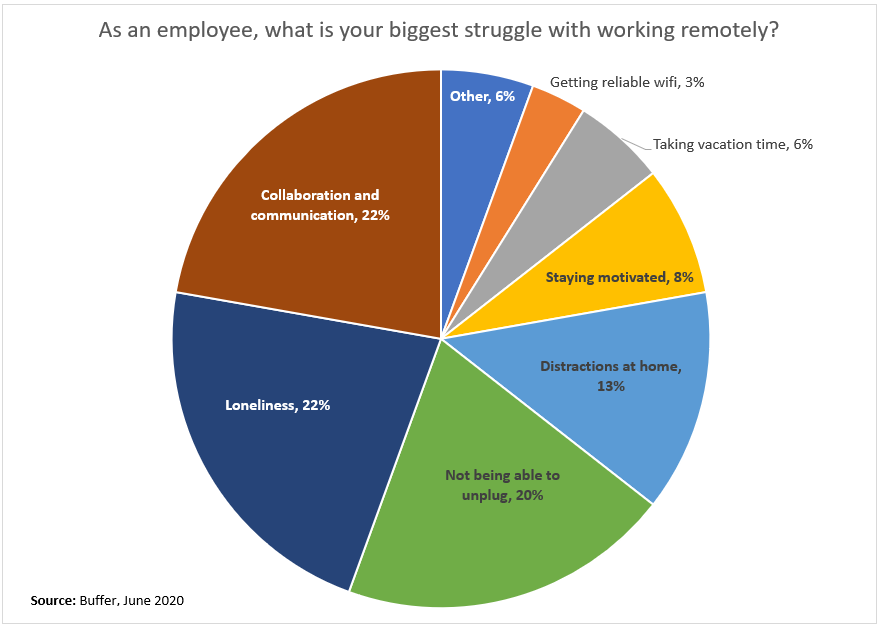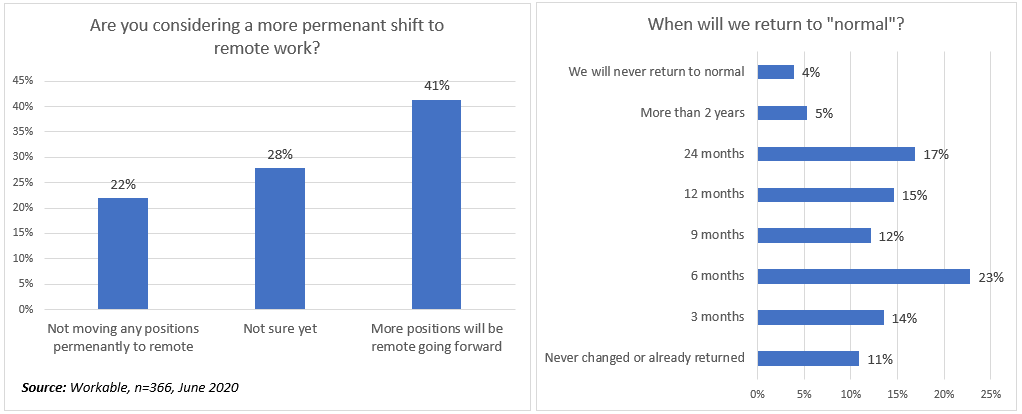New Skills in Managing Employees and Customers Learned From a Pandemic
Covid-19 has changed many aspects of banking from branch operations to credit underwriting and remote supervision of employees. Many community bank managers are physically distanced from their teams because of the pandemic. This distancing creates new challenges on how to supervise, motivate, communicate with, coach, train, and review bankers. We face this same challenge and we would like to share how we see other bank managers handle this challenge as well.
Challenges For Remote Supervision
The primary management principle is to ensure that employees operate at peak performance. We assume that your bank can provide all of the technological tools that bankers need to work – those include a computer, smartphone, internet connection, monitor, printer, software access, and all of the other basic communication tools of the modern office environment. But your employees are still missing the camaraderie of the office and interaction with their colleagues. Your employees may also be more physically separated from clients and prospects. So what must managers do to enhance bankers’ performance in a physically distanced environment?

First, managers must recognize that they will always get the behavior they reward. The reward comes in the form of feedback, recognition, and remuneration. Second, culture is created top-down, and your employees will mimic your behavior. Your team behavior reflects on you as the manager. Third, you are responsible for your team. Your job is to help your team operate at peak performance, and managers cannot order employees to excel, but they can create an environment that fosters excellence. Fourth, managers need to show employees how they can achieve their goals – whether that is compensation, recognition, independence, control, or some other need. As a manager, your job is to show a banker how their specific behavior and performance lead to the achievement of their goals.
Two Common Mistakes In Remote Supervision
We witness two common mistakes that managers are making during Covid-19 in supervising their employees. First, some managers believe that certain employees do not want to be contacted. Some managers believe that certain high-performing, sales-motivated employees want to concentrate on their work and not be supervised by management. The truth is that all employees want to be contacted – not always supervised, but contacted to be listened to and to share information. Even the veteran, top-performing banker, will appreciate a manager who will call to share corporate information and ask questions and listen to that person’s needs. Second, some managers will let rules slide during the pandemic for both top and poor performers. However, do not let top performers break the rules or go their own way and do not relax performance marks and reporting rules. That is because other employees are watching. If you let top performers avoid call-in meetings, then other employees will note this and feel that rules do not apply to them. If you do not encourage and empower poor performers to improve, middle performers will feel that subpar performance is being encouraged and will become less motivated to succeed.
How to Motivate Bankers
Employees are motivated by fear, incentive, and achievement. Achievement, unlike fear and incentive, is a longer-term motivation and involves achieving long-term success and development. During a pandemic, managers run the risk of de-motivating employees through four common pitfalls as follows:
Isolating employees: Managers may not be spending physical time with bankers in the office or in meetings with customers and prospects. Therefore, managers must make an extra effort in reaching out to employees both in planned and ad hoc calls to ask questions and listen to employee’s needs and concerns.
Poor top-down follow-through: Managers must lead by example and perform their job and demonstrate their commitment to the team.
Treat employees differently: Managers need to treat top, middle, and bottom performers with the same set of rules and not excuse lack of motivation or allow relaxation of rules. If a general conference call is planned and agree to, all should attend. If a campaign is launched, all employees should participate. All employees are watching to see how managers are favoring some or demonstrating inconsistent messages to the team.
Lack of recognition or appreciation: Without physical group meetings, it becomes more difficult to show appreciation for performance and share recognition. However, managers must still find ways to share feedback through both one-on-one and one-on-many communication. Managers must be more motivated to host online meetings and share performance remotely.
Communication is Now More Important
During a pandemic, when physical meetings are more limited, the manager’s communication with the team takes on broader importance. Employees find that good communication with managers is motivating. It is a way for managers to express recognition and respect, and it helps employees understand how to control their circumstances. During Covid19, many employees have lost the ability to control their circumstances, and communication with management helps employees understand how they can regain this control now or in the future.
So what defines good managerial communication? Some managers are under the impression that good communication requires managers to develop good talking skills, but instead, good communication requires managers to develop better listening skills. Managers can communicate better by listening to their employees, not make assumptions about their employees, follow through on promises they make, and create a working environment that is clear and consistent.
Physical presence is the best form of communication for a number of reasons. Most importantly, studies show that up to 65% to 80% (depending on the content) of human communication is from non-verbal messaging. But if physical presence is not an option because of the limits of the pandemic, managers have a number of options. The best alternative to physical presence is a video conference, followed by phone, then email, and finally text. This order of preference follows the most to least context that is present in the form of communication.
A few important points about video conferencing:
- It permits many visual cues that are necessary for human communication. For example, eye contact, facial expression, and posture enable us to understand the meaning of a message from a speaker that voice communication alone may not completely convey.
- It increases productivity reducing the length of meetings. People often see the fatigue on peoples’ faces and understand the need for conclusion and resolution.
- It provides the benefit of visual aids. Powerpoints make it easier for individuals to stay focused on a meeting’s purpose and objective. This heightens concentration and allows participants to absorb more information.
- It also helps eliminate the miscommunication that often occurs during the exchange of ideas between team members because people are able to grasp unspoken elements or reiterate facts that may have initially been misunderstood.

Coaching and Training
Coaching and training should not discontinue during Covid-19. In fact, bankers need more coaching now that they are physically distanced and web conferencing makes this easier to do than in-person. Managers must listen to their team members for what they need and what customers are telling frontline employees they need. Managers must do more listening and keep their virtual “doors” open by encouraging employees to reach out through a form of communication appropriate for the employee (text, email, calls, or video conferencing).
Because many conventions and conferences are currently suspended, now is a time to embrace online learning courses. Microlearning online is a perfect way for employees to advance their professional development.
One big missing piece in many banker’s training is how to manage customer relationships and deliver that trusted advisor assistance via video conference. Many bankers assume it is like picking up the phone but it is not. Every banker now needs to learn not only the technical aspects of managing a video conference such as lighting, backgrounds, presentations, using chat, audio, and recording, but also the behavioral side.
A video conference presents some unique opportunities for engagement and adding value that bankers need to learn to leverage. At our own bank, we are proponents of surveys to discern learning needs and individual weaknesses in knowledge.
We then use videos that are no longer than 5 minutes to educate on specific topics, followed by up to 2-pages of written material or excel calculators for “lab-type” work. For example, through a survey, we identify our lenders who want more information on how to explain a loan prepayment provision to a customer. We share with these lenders two different four-minute videos on the topic, follow up with a one-page description, and an excel file showing an example of the calculation, and finally, we offer a webinar to discuss the topic.
Using basic video recording skills, recorded webinars can be cut and turned into simple recordings that can be shared not only with bankers for training examples, but used as tools that bankers can share with their customers and even their customer’s customers in the case of commercial accounts. We will be discussing this technique in the future and even show you examples, but our point today is this is a new proven skill and methodology that bankers can learn and leverage to increase productivity like never before.
Employee Reviews
Employee reviews should not be suspended during Covid-19. Instead, they should be emphasized. Few managers relish doing employee reviews and believe it’s necessary to appease HR. But that view is wrong – employee reviews are for the benefit of the employee, not HR or the manager. One idea is the B33 review. A B33 review is a bottom-up review every three months, of three things the manager can do to help the employee. As managers, we prefer to know what employees think of us and the work environment (while HR may prefer to understand what we think of our employees). Every three months, we spend 5 to 15 minutes with each banker to understand their point of view, and we ask them the three things we, as managers, are doing that either get in their way or we can do better to help them achieve peak performance. We write down the three things and review those in three months to evaluate our performance as managers.
Conclusion
There is a tendency by some managers to decrease communication with their team during a pandemic. This is natural given the isolation that some bankers feel, but it’s the wrong strategy for peak team performance. Instead, managers should be doing everything in their power to continue communicating with their teams in order to supervise, motivate, coach, train, and review performance.

